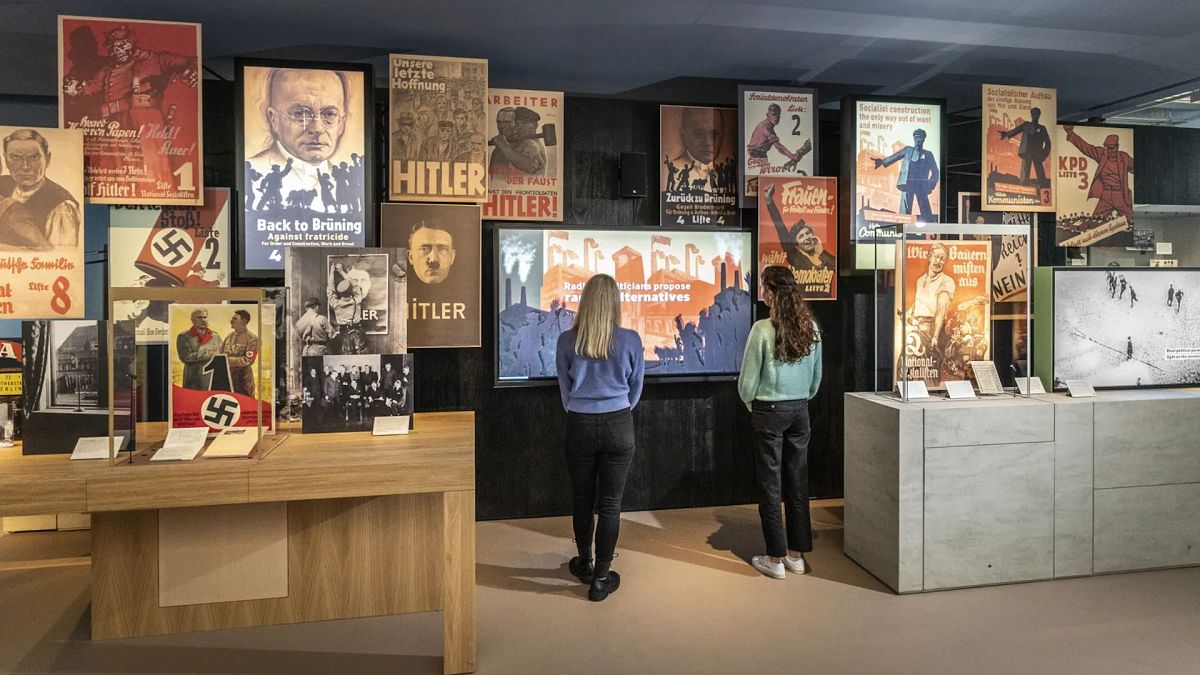Published on
It’s just one word – but two leading Holocaust historians say it warps history.
The Imperial War Museum (IWM) in London has refused to alter an information panel in its Holocaust Galleries after two leading historians criticised its wording as historically inaccurate.
Describing the Nazi’s 1935 Nuremberg race laws, the disputed caption reads: “Under the provision of the law, a person was defined as Jewish based on how many observant Jewish grandparents they had, even if they were not personally Jewish themselves.”
The word “observant” triggered concerns from a retired academic visiting from New York last year. She wrote to the museum arguing the phrase was historically inaccurate, saying it “must be changed”.
Announced on 15 September 1935 at a Nazi Party rally, the Nuremberg Laws turned Nazi racial ideology into law. They defined who counted as Jewish, stripped Jews of citizenship, and banned marriage or sexual relations between Jews and “Aryans.”
Speaking to The Guardian, the retired academic – who asked not to be named – said she was “extraordinarily impressed” by the galleries overall, but “then I came to the race laws, and I know that ‘observant’ Jewish grandparents just made no sense. It disregards the vast majority of the Jewish population who are not observant.”
She added that the Nazis aimed to eradicate all Jews regardless of religious observance: “This is such a misleading impression of the Nazi outlook that for me it’s reprehensible that it stays in the public domain.”
The academic then turned to two prominent Holocaust historians for comment. Christopher Browning, known for his work documenting the Final Solution, said: “The issue was not whether the grandparent was observant but whether his or her birth had been registered with the Jewish community.”
Timothy Snyder, historian of Nazi Germany and Eastern Europe, agreed: “It did not matter whether the grandparents were observant … No one was saved from persecution, as the wording incorrectly implies, by having grandparents who were not observant.”
How have the Imperial War Museum responded?
In a statement made to Euronews Culture, a spokesperson from the Imperial War Museum said it “takes comments regarding our interpretation very seriously” and acknowledged “the sensitivities regarding this caption.”
The museum noted that with history “as complex and sensitive as the Holocaust, questions of interpretation and nuance will be raised by audiences from time to time,” adding that it always investigates concerns thoroughly.
The IWM stressed there was “absolutely no suggestion” across its Holocaust Galleries that the Nazis’ persecution of Jews was restricted to those who were religiously practising or their descendants. Rather, the caption in question was tied specifically to a 1935 diagrammatic poster associated with the Nuremberg Laws. The word “observant,” it said, referred in this particular case to people “formally associated with Jewish religion in public records, such as birth and marriage certificates and civil registry documents.”
The statement explained the intention was to show how, despite believing Jewishness was biologically determined, the Nazis sometimes relied on religious affiliation in official records when categorising people – “unable to find any scientific – or any other – basis for their claims.”
The museum also pointed to nearby text making clear that “many of those whom the laws identified as Jews had never identified as Jewish themselves” and that this method of categorisation was never a meaningful or restrictive basis for Nazi persecution.
The IWM said it was “considering whether some further clarification should be added to the caption in consultation with external advisors, in line with our normal processes.”

